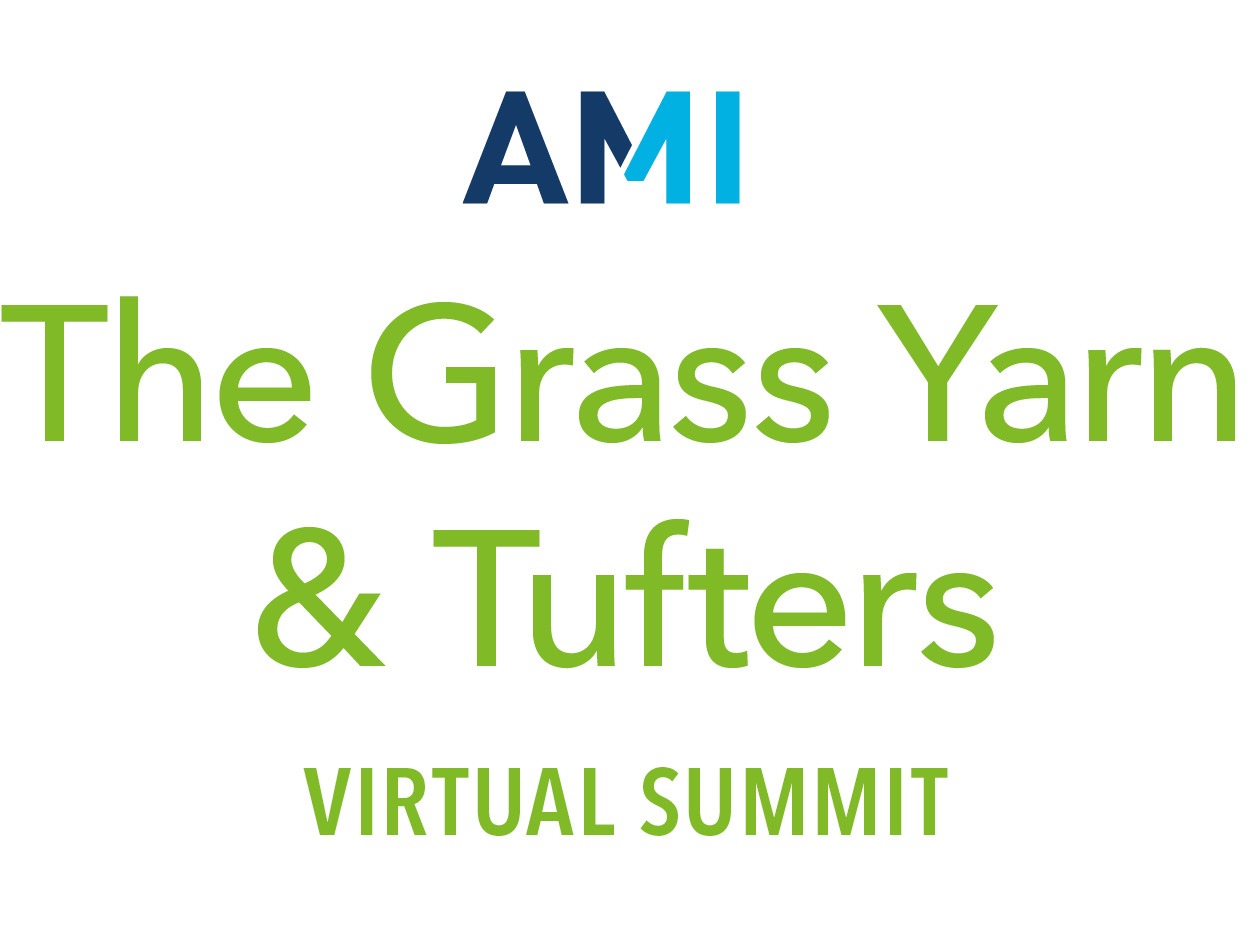AMI Round Up
- 06/01/2021
By Bryn Lee

25 – 27 May 2021
A meeting place for all in the artificial grass industry
The 2021 AMI Grass & Tufters Conference took place, last week, over three days, albeit on Zoom, and was as relevant and educational as the more usual live event. Well hosted and interactive, the many sessions provoked some excellent questions and answers.
John Nash, from AMI, opened the conference with a review of the industry. As always insightful and informative, John gave confidence to an industry where Covid has had different impacts. It seems most companies have survived although some are seeking new owners or investors. Sport sales have gone down but landscape and leisure have boomed, making for a growing, overall market.
John reported that the world’s top 5 producers account for 50% of the global volume of synthetic turf, of which 3 are Chinese companies. Eyebrows were later raised when Stefan Didderich, from ESTC, in his presentation, stated that the association was the global voice of the synthetic turf industry. Quite a claim given that the two largest companies in the industry are not allowed to be members. Surely the time has come for trade associations such as ESTC and the STC to be honest and either admit all companies, or stop pretending to be the global voice for synthetic turf and admit that they are a protectionist, closed organisation. By adding recognised global leaders, the good work carried out by these organisations would have much larger recognition and impact.
Back to John, who left headline conclusions for the industry to ponder, including what to do with old turf and how to cope with the micro plastic infill issues. Other sessions picked up on this and included excellent information on recycling old turf.
This year’s presentation from CCGrass focussed on feedback from footballers on why there are still different reactions to synthetic turf pitches, and called on all sectors of the production chain, from polymer suppliers to end tufting companies, to become more involved with the end-user, and help enhance their experience.
The relevance of feedback was somewhat undermined by perhaps the strangest presentation of the week, which concerned the so-called 4th and 5th Generation turfs, which, firstly are nothing new and secondly should really be categorised as 1st and 2nd Generation. The “4th Generation” only has sand added to the denser turf, and has been proven not to work, having failed FIFA testing. The “5th Generation” referred to the addition of an integral shock pad on the back of the turf , which is, well, a step back to the early days of astroturf. Neither version is the way forward, and only addresses the removal of microplastic infills, whilst confusing a market place by inventing new labels, that are, at the very best, misleading.
With synthetic turf systems becoming more relevant in the promotion of sport and participation, the presentations from Sportslabs on skin/surface interaction and Labosport on biomechanics, showed how much investment is being made into fine-tuning pitch performance, whilst the excellent session from Jacki Stephen, from Don & Low, addressed improved fibre performance for the long-term benefit of the pitch.
The final day addressed the future and how single use polymers, a cradle-to-cradle circular economy and green technology would be the way forward. Much to do here, but great to see such thought going into innovation, that benefits the environment.
Next year, we hope to be back together, in person, listening, debating and net-working with old colleagues, but with that off the table in 2021, AMI certainly kept the technical side of the synthetic turf industry to the fore.




